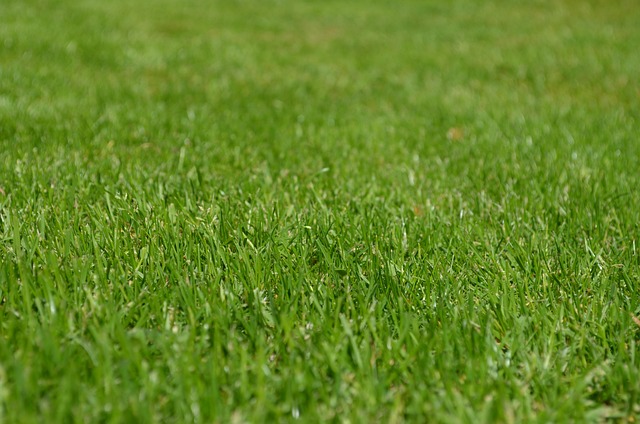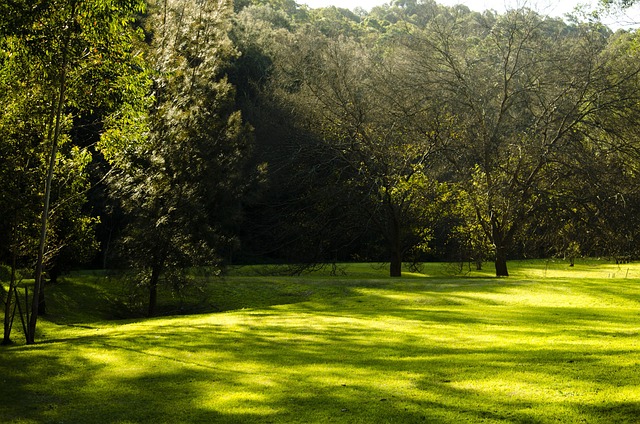Before starting any lawn care or landscaping project, define your vision based on lifestyle, climate, budget, and desired features (e.g., retreat, oasis, garden). Visualize elements harmoniously integrated with balance between aesthetics and practicality, like drought-resistant plants for conservation and shaded patios for comfort. This thoughtful planning transforms your yard into a beautiful, functional space aligning with your style and long-term goals, practicing strategic lawn care and landscaping.
Transform your outdoor space into a vibrant oasis with expert landscaping design and implementation. From understanding your unique vision to executing the perfect plan, this guide covers all aspects of creating a stunning landscape.
We’ll explore how to define your style, incorporate functional elements, and choose plants that thrive in your climate. Learn about meticulous site preparation, detailed planning, and budget considerations. Discover the benefits of professional hiring or DIY approaches, and gain tips for successful planting and ongoing lawn care maintenance. Master the art of landscaping with these essential steps and create a thriving outdoor sanctuary.
- Understanding Your Landscaping Vision
- – Defining your style and needs
- – Incorporating functional elements
Understanding Your Landscaping Vision

Before diving into any lawn care and landscaping project, it’s essential to have a clear vision for your outdoor space. This starts with understanding what you want from your yard—whether it’s a tranquil retreat, an entertaining oasis, or a vibrant garden that attracts local wildlife. Consider factors like your lifestyle, climate, and available budget. Do you envision a lush green lawn, ornamental trees, or perhaps a vegetable garden? Perhaps you dream of outdoor living spaces, complete with patios and firepits for gatherings with friends and family.
Visualize how these elements fit together in your mind’s eye—a harmonious blend where each component complements the other. Keep in mind that effective landscaping design often involves balancing aesthetics with practicality. For instance, choosing drought-resistant plants might be more suitable if water conservation is a priority, while a shaded patio area could enhance outdoor comfort during hot summer days. This thoughtful approach ensures your landscaping project not only transforms your yard into a beautiful space but also aligns with your lifestyle and long-term goals.
– Defining your style and needs

Defining your aesthetic vision is a crucial step in landscaping design. Whether you envision a serene, natural retreat or a vibrant, structured garden, understanding your personal style and preferences is essential. Consider the mood you wish to create—calm and tranquil or lively and dramatic—and incorporate these into your landscape plan. In terms of lawn care and landscaping, aligning your design with your lifestyle and needs ensures practicality. For example, if entertaining guests is a priority, designing an outdoor living space with a kitchen area and comfortable seating might be ideal. Conversely, if low maintenance is key, opt for hardy, drought-resistant plants and consider artificial grass for a hassle-free lawn.
This initial phase involves evaluating your property’s unique features, such as sunlight exposure, soil type, and available space. Understanding these factors will guide your plant choices and design layout. For instance, certain plants thrive in full sun, while others prefer shade, so knowing your yard’s lighting conditions is vital for successful landscaping. Additionally, assessing your climate and local weather patterns ensures that your chosen plants are well-suited to survive and flourish year-round, contributing to a vibrant and sustainable outdoor space.
– Incorporating functional elements

Incorporating functional elements into landscaping design is a crucial aspect of creating outdoor spaces that are both aesthetically pleasing and practical. Beyond the standard greenery, consider features like patios, walkways, and retaining walls to enhance functionality. These structural components not only provide additional living areas but also facilitate easy navigation throughout the landscape, ensuring accessibility for all users. For instance, a well-designed patio can serve as an outdoor dining area or a relaxing spot, while pathways can guide visitors from one point to another, making the entire space more user-friendly.
Lawn care and landscaping go hand in hand when incorporating functional elements. Regular maintenance of the lawn, including mowing, fertilizing, and watering, is essential to keep it healthy and vibrant. This not only contributes to the overall visual appeal but also ensures that functional areas like walkways and patios remain stable and safe. Additionally, strategic placement of plants, trees, and shrubs can provide natural shade, reduce noise pollution, and create a sense of privacy, further enhancing the functionality of outdoor spaces.
In conclusion, effective landscaping design goes beyond aesthetics; it involves understanding your vision, defining your style, and incorporating both practical and beautiful elements. By balancing form and function, you create a lush oasis that enhances your lifestyle and contributes to the overall value of your property. Remember, meticulous planning and professional lawn care are key to achieving and maintaining a stunning outdoor space that becomes the envy of the neighborhood.



